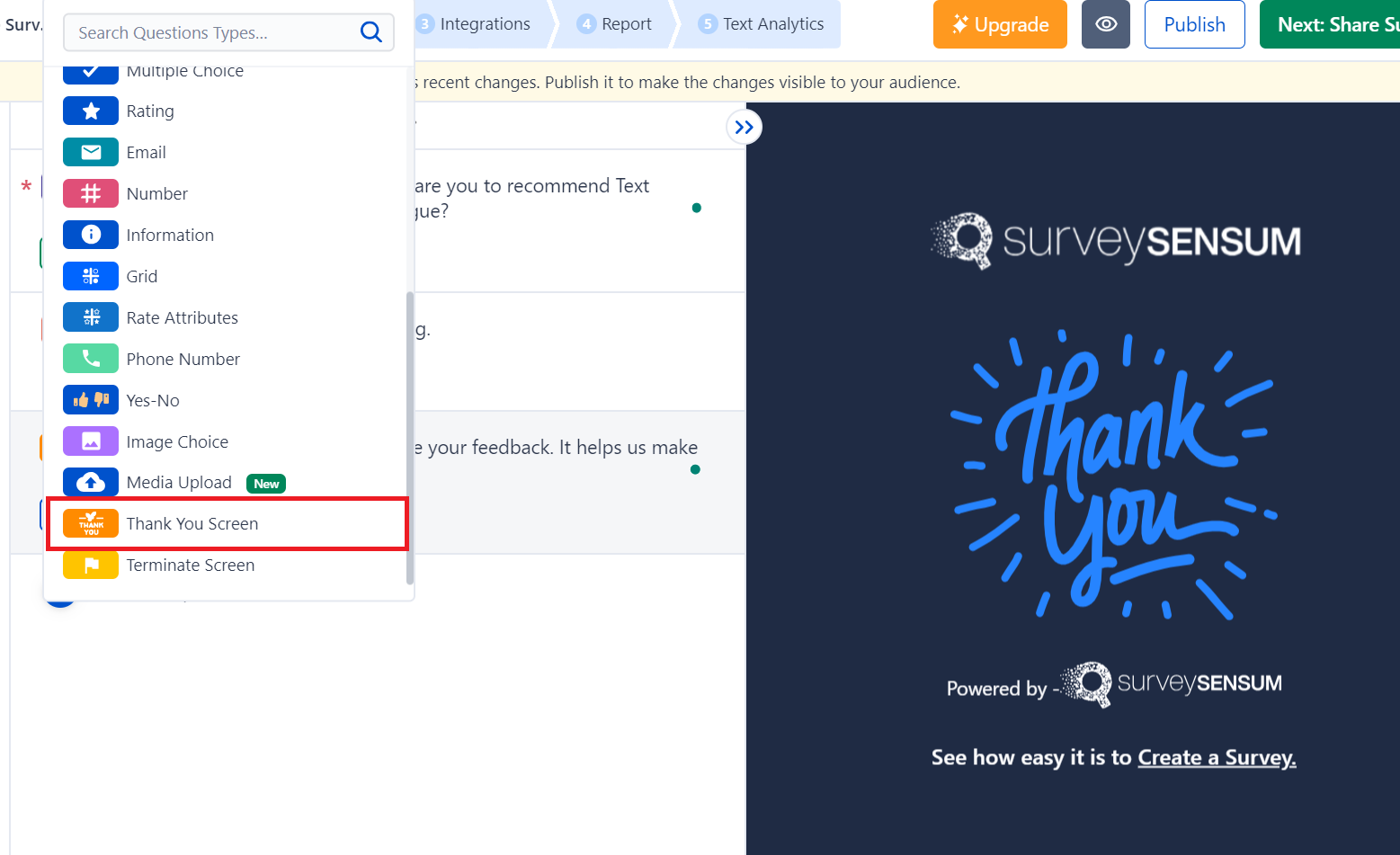

Closure is just as important as the beginning. And the same goes for your survey process.
How? – With Survey Redirect.
Instead of just a generic “Thank you for your time” screen, with Survey Redirect you can actively engage with your customers here and take the survey process to the next level.
Want to learn how to enhance your survey game and keep your customer hooked even after the survey is done? Let’s find out!
What is a Survey Redirect?
A survey redirect is an advanced feature that enables you to send respondents to a specific page after completing a survey. Instead of ending the survey with a generic “Thank You!” screen, with survey redirects you can redirect your respondents to a particular webpage, product page, any review platform like Google reviews, or to any particular URL.
But, Why is Survey Redirect Important?
Here’s why I implement survey redirection in my surveys:
- Keeps the Conversation Going: Instead of ending abruptly, a survey redirect can guide respondents to another relevant survey, landing page, or resource. This keeps their interest alive and can lead to more insights or actions.
- Customizes the Customer Journey: You can use redirects to tailor the next step based on the responses given. For example, happy customers can be directed to a testimonial form, while dissatisfied ones can be guided to a more detailed survey or complaint form to elaborate on their issues.
- Boosts Conversions: Redirecting respondents to a product page, sign-up form, special offers, or review platform after a survey can turn valuable customer feedback into actionable results, like purchases, subscriptions, or good word-of-mouth.
- Enhances the Overall Experience: A smooth transition between surveys or related content creates a more professional and thoughtful experience, making respondents more likely to engage again in the future.
Utilize SurveySenum’s AI-enabled survey builder to create surveys that are personalized and engaging to boost your survey response rate and gather relevant feedback. And the best part? It won’t take more than 5 minutes of your time!
So, now we need to survey redirect and why it is important, let’s now implement it in surveys.
How To Implement Survey Redirect In Surveys With SurveySensum?
Here’s how I use the survey redirect feature in my surveys with the SurveySensum survey builder.
Step 1: Log in to the SurveySensum’s survey builder.
Step 2: Choose a survey template so that you don’t have to start from scratch.
Step 3: Create and edit your survey as required with the builder’s DIY capabilities.
Step 4: After you have added your required survey questions, it’s time to edit your survey’s last page.
Step 5: In the survey builder, click on “Add next question” and select “Thank your screen”. This is the last page of your survey and this is where you need to insert the survey redirection.

Step 6: To insert redirection, click on settings. This will lead you to the customization page.

Step 7: Here, you can customize the last page of your survey by adding an image, video, or any particular URL that you can redirect your customer to. You can also customize the end screen depending on the respondent’s unique score.
For example, if someone rates you 9-10, then they become a promoter and the next question will be. “Thank you for your kind rating!”. Or, if someone rates you below 6, then you can ask them to elaborate on their issues. This customization allows you to create unique experiences for each of your customers.

Now that you know how to create survey redirection in survey, let’s understand some use cases of survey redirection.
How To Use Survey Redirect? [With Use Case]
Here are some popular use cases of survey direction.
1. Review Platforms
After completing a customer satisfaction survey, you can redirect satisfied respondents to review platforms like G2 or Google Reviews.
→ This encourages happy customers to leave positive feedback publicly, helping to boost your brand’s online reputation and credibility.
2. Open-Ended feedback (If not added to the survey)
If a respondent leaves negative feedback or has more to share, a survey redirect can guide them to an open-ended feedback form. This allows customers to express their thoughts in greater detail, helping you capture deeper insights and address concerns more effectively.
For example, if a customer gives a rating of 4 in an NPS survey, they automatically fall into the detractors category. This requires a detailed and open dialogue with the customer to understand their issues and expectations.
3. Specific URL
After completing a survey, you can redirect respondents to specific URLs, such as a product page or a promotional landing page. This is particularly useful when gathering feedback on a new product, and it creates an opportunity for respondents to learn more or make a purchase right away.
Conclusion
Survey redirect might seem like a small addition to our survey process, but the impact is great. It’s a subtle, yet engaging approach to enhance your customer’s survey experience. Instead of a generic “Thank you”, you can keep the conversation going by redirecting them to other resources and can create a more personalized, seamless, and rewarding experience.
However, this small addition shouldn’t take up more than 5 minutes of your time and effort, which is why its implementation requires a robust tool, like SurveySensum. This tool’s DIY capabilities enable you to create a redirection that suits your requirements and it won’t take up more than 5 minutes of your time!















